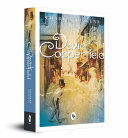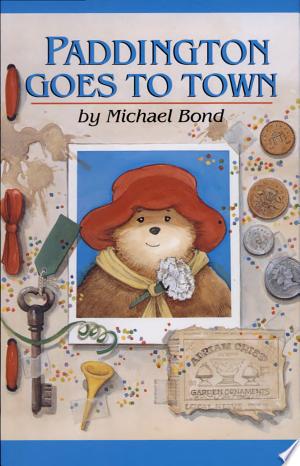Estimated read time: 6 min read
One Sentence Summary
The life and adventures of a young man in 19th century England.
Table of Contents
Introduction
"David Copperfield" is a classic novel written by Charles Dickens and first published in 1850. It is considered one of Dickens' most autobiographical works, drawing inspiration from his own experiences and emotions. The novel takes readers on a journey through the life of the main character, David Copperfield, as he navigates the challenges and triumphs of his upbringing and adulthood. Set in 19th-century England, the story unfolds against the backdrop of social and economic change, offering a vivid portrayal of the era's societal norms and injustices. With its rich character development and powerful storytelling, "David Copperfield" continues to captivate readers and remains a timeless literary treasure.
Brief Synopsis
Plot Overview and Setting
"David Copperfield" is set in Victorian England and follows the life of the titular character, David Copperfield. The story begins with David's birth to Clara and Mr. Murdstone. After his father's untimely death, David's mother marries the cruel and abusive Mr. Murdstone, setting the stage for David's tumultuous upbringing. The novel chronicles David's journey from childhood to adulthood, depicting his experiences with love, friendship, betrayal, and personal growth. The narrative encompasses various settings, including the idyllic countryside, bustling London, and the stark realities of the industrial age.
Main Characters
The novel features a diverse cast of characters, each contributing to David Copperfield's transformative journey.
| Character | Description |
|---|---|
| David Copperfield | The protagonist, an empathetic and resilient young man who faces numerous trials and tribulations. |
| Clara Copperfield | David's loving and gentle mother, whose life is marked by tragedy and hardship. |
| Mr. Murdstone | Clara's second husband, a cruel and domineering man whose treatment of David shapes his early years. |
| Agnes Wickfield | A close friend of David's and a source of unwavering support throughout his life. |
| Uriah Heep | A conniving and manipulative character whose actions have far-reaching consequences for David. |
| Mr. Micawber | A charming and optimistic figure who crosses paths with David during pivotal moments in the story. |
Story Points Over Chapters
Chapters 1-6: Childhood and Loss
The novel opens with David's birth and early years, marked by the loss of his father and the arrival of Mr. Murdstone. David's mother's remarriage introduces a dark period in his life, characterized by Mr. Murdstone's harsh treatment and the separation from his beloved nurse, Peggotty.
Chapters 7-12: School Days and Friendship
David is sent to Salem House, a boarding school where he forms lasting friendships with Tommy Traddles and James Steerforth. These chapters explore the formative years of David's education and his encounters with characters who will influence his future.
Chapters 13-19: New Beginnings and Trials
As David grows into adolescence, he experiences newfound independence and enters the workforce. His interactions with the eccentric Micawber family and his time at Murdstone and Grinby's warehouse shape his understanding of the world and his resilience in the face of adversity.
Chapters 20-27: Love and Loss
David's infatuation with the beautiful Dora Spenlow leads to a whirlwind romance and eventual marriage. However, the challenges of married life and the loss of loved ones test David's emotional fortitude and resilience.
Chapters 28-35: Betrayal and Redemption
The introduction of the conniving Uriah Heep sets the stage for betrayal and deceit within David's social circle. Meanwhile, the steadfast presence of Agnes Wickfield offers him solace and support during trying times.
Chapters 36-42: Reckoning and Reconciliation
David's professional and personal life undergo significant upheaval as he grapples with the consequences of his actions and confronts the deceitful Uriah Heep. This period marks a turning point in David's journey toward self-discovery and accountability.
Chapters 43-50: New Horizons and Reflection
The latter chapters of the novel see David embracing new opportunities and reflecting on the lessons learned from his past. His evolving relationships and encounters with familiar faces pave the way for personal growth and a deeper understanding of life's complexities.
Main Events
The novel encompasses a wide range of pivotal events that shape David Copperfield's life, including his tumultuous childhood, formative years at boarding school, romantic entanglements, professional endeavors, and the complexities of personal relationships. From the loss of loved ones to the discovery of true friendship, each event contributes to David's growth and resilience in the face of adversity.
Themes and Insights
Themes
- Resilience and Perseverance: The novel explores the enduring resilience of the human spirit in the face of hardship and adversity.
- Social Injustice and Class Divide: Dickens sheds light on the injustices and inequalities prevalent in Victorian society, highlighting the struggles of the lower classes and the impact of social status on individuals' lives.
- Personal Growth and Self-Discovery: David Copperfield's journey is a testament to the transformative power of self-discovery and the pursuit of personal growth amidst life's challenges.
Insights
"David Copperfield" offers profound insights into the complexities of human experience and the enduring capacity for love, forgiveness, and personal evolution. Through its rich character development and vivid portrayal of societal norms, the novel invites readers to contemplate the timeless themes of resilience, compassion, and the indomitable human spirit.
Reader's Takeaway
Readers of "David Copperfield" are treated to a poignant and immersive exploration of the human experience, replete with compelling characters, evocative settings, and enduring themes. The novel's timeless appeal lies in its ability to resonate with readers on a deeply emotional and introspective level, inspiring contemplation on the universal themes of love, loss, and the resilience of the human spirit.
Conclusion
"David Copperfield" stands as a literary masterpiece that continues to captivate and resonate with readers across generations. Through its rich tapestry of characters, poignant storytelling, and timeless themes, Charles Dickens' novel offers a profound and enduring exploration of the human experience, inviting readers to embark on a transformative journey alongside the resilient and empathetic David Copperfield. With its vivid depiction of Victorian England and the universal struggles of the human condition, "David Copperfield" remains a compelling and resonant work of literature.
David Copperfield FAQ
What is the plot of 'David Copperfield'?
The plot of 'David Copperfield' follows the life of the titular character, David Copperfield, as he navigates the challenges and triumphs of his life. From his difficult childhood to his struggles in adulthood, the novel explores themes of resilience, love, and personal growth.
Who are the main characters in 'David Copperfield'?
The main characters in 'David Copperfield' include David Copperfield himself, his mother Clara Copperfield, his stepfather Mr. Murdstone, his friends Agnes Wickfield and James Steerforth, and the eccentric Mr. Micawber.
What themes are explored in 'David Copperfield'?
Themes explored in 'David Copperfield' include the impact of childhood experiences on adulthood, the resilience of the human spirit, the importance of friendship and love, and the societal issues of the time such as class disparity and poverty.
What is the writing style of 'David Copperfield'?
Charles Dickens employs a rich and descriptive writing style in 'David Copperfield', capturing the nuances of characters and settings with vivid detail. The novel also features elements of humor and a keen observation of human nature.
Is 'David Copperfield' based on Charles Dickens' life?
While 'David Copperfield' is considered to be semi-autobiographical, it is not a direct retelling of Charles Dickens' life. However, Dickens drew inspiration from his own experiences and emotions, infusing the novel with a sense of personal reflection.





